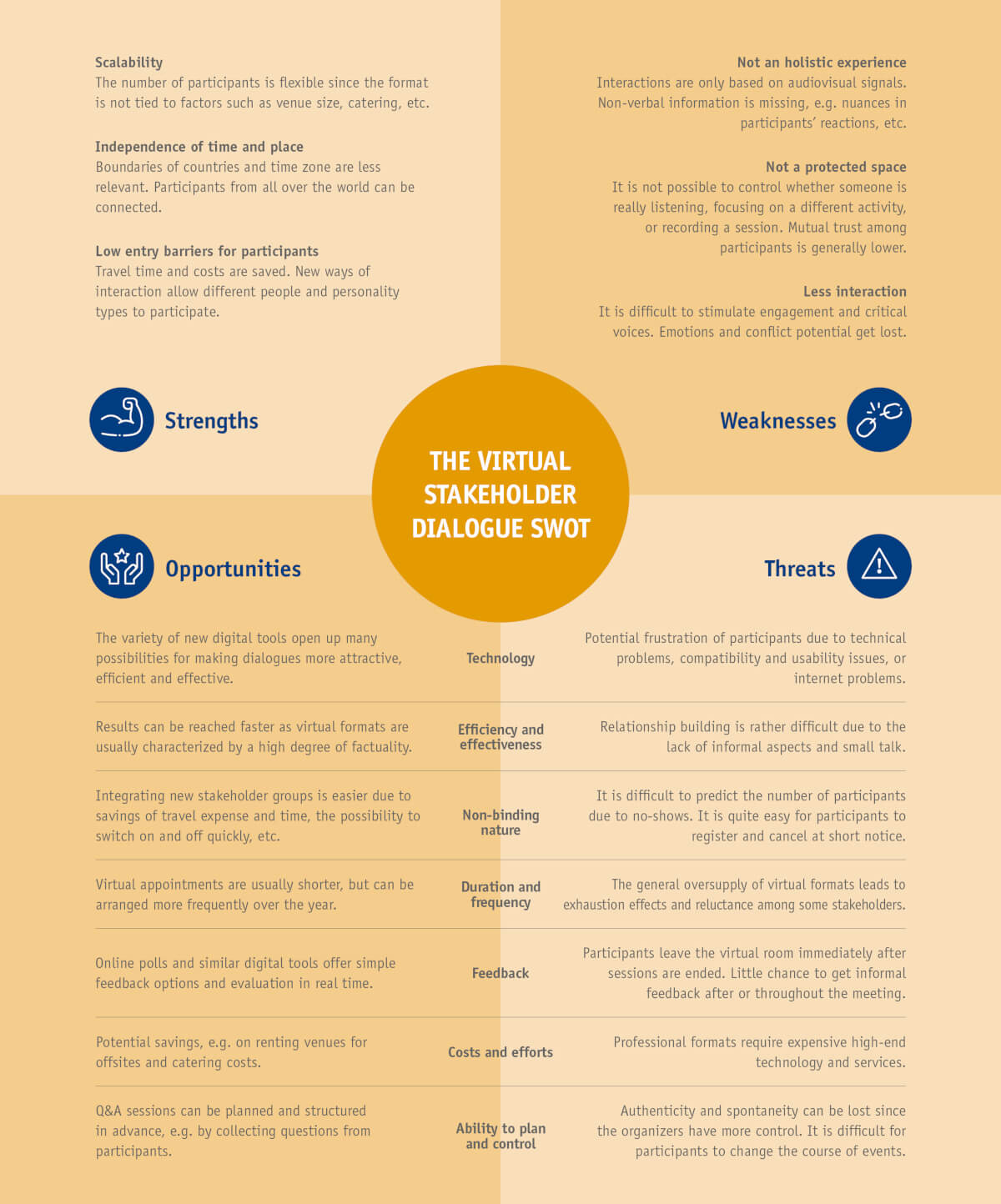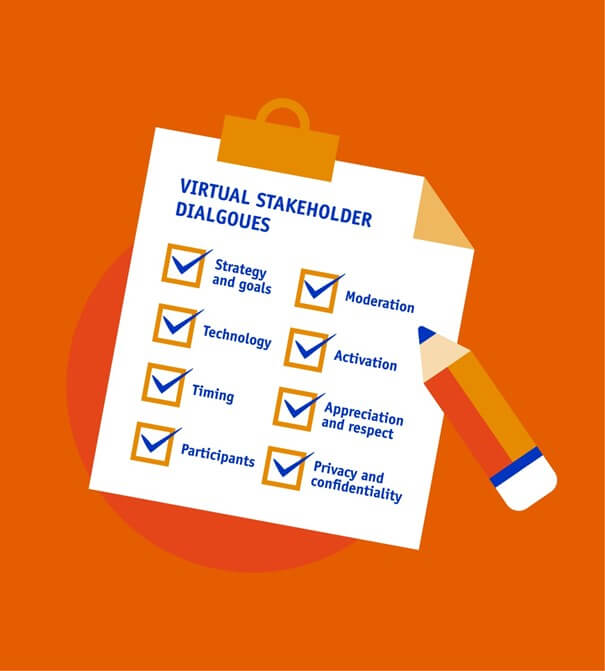© Tobias Tanzyna
Moving stakeholder dialogues from face-to-face to online formats
The environmental impact of a company or the sustainability of its supply chain are just two examples that often lead to heated debates with NGOs. In the past, these controversial and often sensitive issues had been discussed face-to-face in so called stakeholder dialogues. The COVID-19 pandemic however has hampered in-person meetings and required communication departments to search for alternatives. When dialogue formats are moved from real-world settings to online environments a variety of challenges emerge.
That’s why the Academic Society for Management & Communication initiated a research project on virtual stakeholder dialogues. The study was led by Professor Ansgar Zerfass at Leipzig University. In the article below we will discuss benefits and challenges of this relatively new format and point out eight success factors.
Virtualization and stakeholder dialogues – it’s a match!
Virtualization is one of the big buzzwords in our field, while stakeholder dialogues have proven to be a reliable instrument of corporate communications to discuss controversial topics. The challenge for the research team was to combine both concepts – virtualization and stakeholder dialogues. It raised the question of whether a format based on intimacy and personal interaction can be virtualized at all?
As a first step, a definition of virtual stakeholder dialogues was derived:
- A virtual stakeholder dialogue is a symmetrically designed communication format for personal, confidential, and issue-centered exchange between an organization and (critical) stakeholders on problems of various origins supported by digital technologies in which all or some participants are not in the same place. They usually take place synchronously, although asynchronous elements are conceivable.
- Typical objectives are to achieve a mutual understanding of perspectives, interests, positions, and facts. Based on this, virtual stakeholder dialogues can also be used to achieve more advanced goals such as collaborative problem solving or participation.
Opportunities and threats of virtual formats
The limitations of virtual formats have raised skepticism among communication professionals. Many companies have completely stopped stakeholder dialogues during the pandemic. Others, who have already staged virtual stakeholder dialogues have been pleasantly surprised.
To build on the experience of experts the researchers conducted expert interviews with communicators from 35 companies, organizations and consultancies who conduct stakeholder dialogues themselves. The goal was to determine the challenges of stakeholder dialogues and what requirements result from them. The interviews showed that for most experts neither the pros nor cons dominated.
The following SWOT analysis summarizes all strengths and weaknesses, opportunities and threats of virtual stakeholder dialogues:

When should communicators rely on a virtual format?
- When regular exchange takes place: Many companies have often established personal relationships, know each other’s interests, and work toward common goals with their key stakeholders. Here, virtual formats are a good option since they can be integrated easily into the daily life and work of both.
- When stakeholders cannot be reached: Residents or stakeholders are not always on site or willing to participate in dialogues in person. NGO representatives and politicians for e. g. are sometimes in such high demand that they cannot attend every event. This is where virtual stakeholder dialogue can help – especially when dialogues are strategically important to companies but not high on the priority list for participants.
- When it comes to niche topics: In some areas, the issues are so specific that researchers and activists need to be spoken to. These people tend to be busy, in demand and scattered around the world – getting them around the table is nearly impossible. Virtual formats have shown that experts from around the world can be easily connected in this way.
8 things you should keep in mind when organizing a virtual dialogue

- Strategies and goals: Set a strategy to identify if a stakeholder dialogue is the right format to achieve your goals, then choose between a virtual or face-to-face dialogue.
- Technology: Make sure that the online technology used, is stable and easy to use, even for participants who are less tech-savvy.
- Timing: Keep online meetings short and focused. More frequent appointments are possible – but only consider this if the goals require it.
- Participants: Know your stakeholders. Virtual dialogs should be conducted with stakeholders with whom initial points of contact already exist. Consider aspects such as digital literacy. The overriding goal is not to overwhelm the invitees or put them in uncomfortable situations.
- Moderation: Schedule an internal or external moderator for your dialogue format and consider that it is more challenging to virtually moderate because the formats are shorter, and it is difficult to capture the attention span, engagement, and mood of participants via video.
- Activation: Engage your participants for fruitful discussions by stimulating the discussion with thought-provoking questions, address participants directly, or use the built-in quick polls.
- Appreciation and Respect: Respect the time and intentions of your participants and remember that the participation of stakeholder dialogues is voluntary.
- Privacy and Confidentially: Create situations to feel trusted for e.g. by asking all participants to turn on their camera to increase familiarity, it will help to create mutual trust.
About the study
Is it possible to conduct stakeholder dialogues virtually? This was a question often asked during the COVID-19 pandemic when no face-to-face meetings were allowed. The research team consisting of Dr. Ansgar Zerfass, Daniel Ziegele and Hannah Kurtze from Leipzig University conducted 39 interviews with communicators form 35 German corporations, consultancies, and service providers between April and May 2021. The study analyzed one of the five trends of the Communications Trend Radar 2021 – virtualization of communications – in more detail. The Communications Trend Radar is a recent research project by the Academic Society for Management & Communication. The study identifies each year five key trends that will influence corporate communications in the near future.